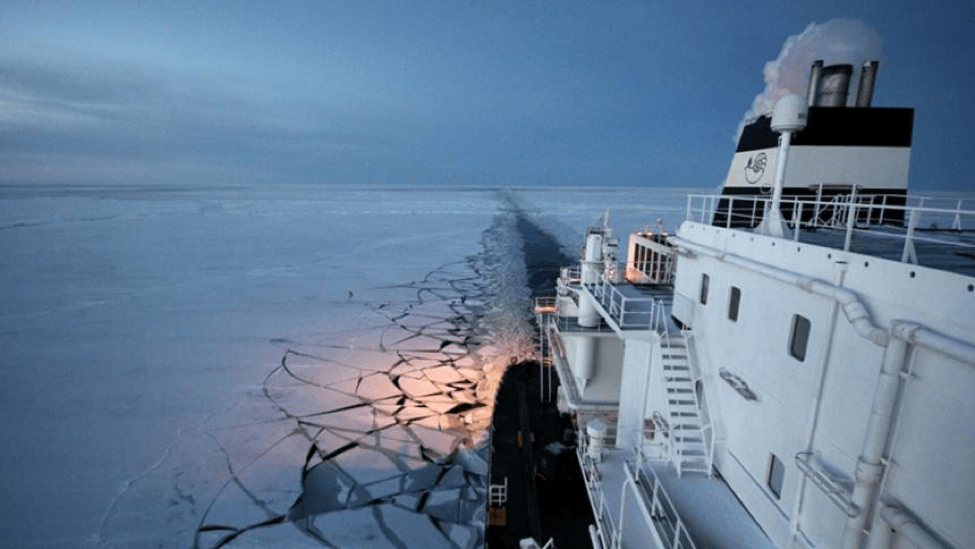Global warming is rapidly changing the world map as we know it. Even though sea level rises will make coasts and islands disappear from the face of the world, and climate change will have a huge impact on all of our lives, there is also a significant benefit for the shipping industry. According to scientists, 2030 is the year when the percentage of Arctic ice will be so low in the Arctic Ocean, that it will allow the passage of container vessels, connecting Europe with China and Southeast Asia. This route is called the Northwest Passage, and so far a number of vessels of smaller capacity have successfully completed it. According to Wikipedia, the Northeast Passage (abbreviated as NEP) is an Arctic Ocean shipping route connecting the Atlantic and Pacific Oceans, traversing the Arctic following Russia’s and Norway’s coasts.

The advantages of this route are so substantial for the shipping industry that all shipping lines are preparing for this new service.
Traditionally, the connection between Europe and China, and Southeast Asia, is made through the Suez and Panama Canals. The NEP will allow the completion of the voyage in shorter transit times, as shown in the above comparison diagram.
Operation times in shipping are crucial in growing profits, so the new shorter transit time is a huge advantage, not only because fuel cost will be reduced, but because the turnaround time for the vessel to perform a new journey will be shorter. Other costs that can be deducted are the canal fees and charges that all steamship lines have to pay to the local authorities every time the vessel passes through the Suez and Panama Canals. We should also note of the risk of piracy, in the Indian Ocean and the Red Sea, will also be avoided.
Besides the benefits offered by the NEP, we should also consider the risks of replacing pirates with icebergs.
Navigating though this rough, new climate, companies will need the help of local skippers who are familiar with these waters. Besides the risk of hitting an iceberg, you also face the risk of needing Russia’s fleet of nuclear-powered icebreakers if an iceberg in closing your path. Any rescue operation gets more complicated in such rough climates and Russian bureaucracy is not easy to push aside.
Lastly, the travel window for the NEP is only 4 months, from July to November, since this is the time that ice is melting, as opposed to the traditional routes which are available all year.
The first vessel to have successfully performed the journey was the bulk carrier “MV Nordic Barents”, in 2010, carrying iron from Kirkenes, Norway to Lianyungang, China.
The total transit time was 21 days, compared to 37 days that would be the norm through the Suez Canal. The world’s busiest ports will be called from this new service. For example, Vancouver, Rotterdam, Yokohama, and Dalian are some of them, those alone revolutionizing global shipping for the Chinese, European and North American markets.
- 212shares
- 187LinkedIn




